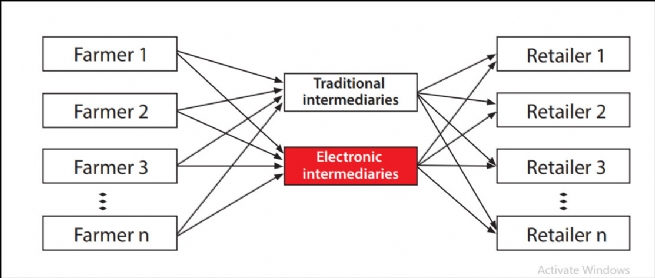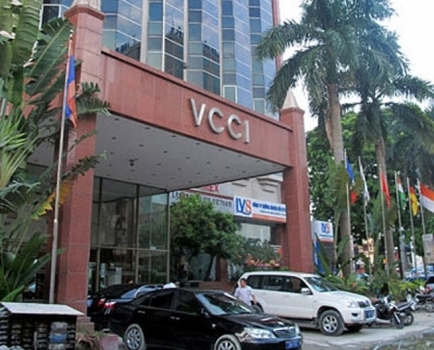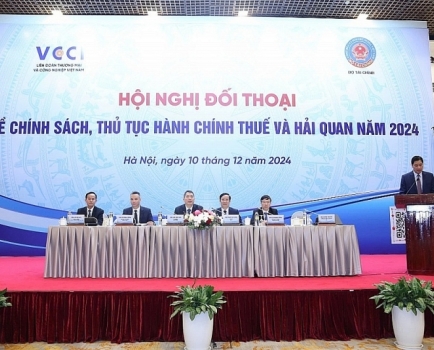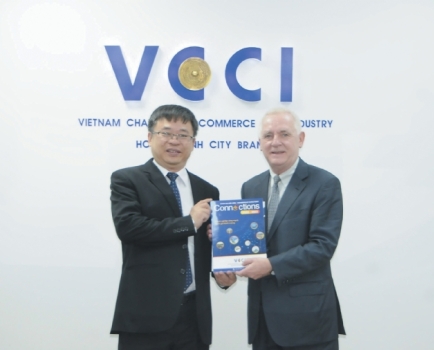Sustainable Market Development Strategy for Vietnamese Agricultural Products
Fri, 16 Apr 2021 13:41:00 | Print | Email Share:
In recent years, Vietnam’s economic structure has changed positively with the greater share of service and industrial sectors. Even so, agriculture still accounts for about 10% of GDP and creates many jobs. However, the thorny setback of “steep price slump in bumper crop” sparked many farm produce rescue campaigns.
Vietnam has successfully exported agricultural products to the world market, especially in the recent period when it entered into many free trade agreements. Vietnam is a top 15 agricultural exporter in the world with an export value of over US$40 billion a year and shipments to more than 180 countries and territories in the world. its key agricultural export markets include China, the United States, ASEAN, the European Union, South Korea, and Japan. The share of agricultural exports to these markets accounts for more than 76% of the country's total export agricultural value.

However, over the years, the thorny setback of “steep price slump in bumper crop” sparked many farm produce rescue campaigns. Vietnam as well as other countries in the world has solutions to this problem, based on market economy principles combined with governmental interventions. Solutions can be divided into the following policy groups:
First, expanding and diversifying markets (increasing demand) for agricultural products by enlarging markets for agricultural products, especially exports to the world market, boosted by bilateral and multilateral economic cooperation programs. Particularly, multilateral programs such as AFTA, ACFTA, AIFTA and RCEP cover economic regions, including ASEAN, China, India and Japan, accounting for about a quarter of the global population.
Second, limiting and controlling the supply by managing production scale to support prices for agricultural products like reducing output, providing loans for farming and purchasing products at predetermined contract prices to ensure incomes for farmers even in a volatile market.
Third, applying floor purchasing prices to agricultural products in the harvesting season. This policy requires the government to spend a large amount of money buying agricultural products for farmers.
However, market-based policies that respect the supply and demand law often yield more positive and sustainable results than policies that directly interfere with agricultural prices. In today's highly competitive global market, quality puts pressure on organizations to find new ways to focus on sustainable and intensive agricultural development rather than quantity to create and provide ever greater value. Moreover, it has been shown that, in emerging economies like Vietnam as well as mature markets, the power of buyers has surpassed the power of customers. The price is always an important competitive variable in many markets and needs to be considered in domestic and international supply chain management.
Supply chain management plays an important role in pricing policy as it keeps the cost of doing business minimal and the profit highest possible. This work includes mobility, storage of raw materials, manufacturing, inventory, and product finishing from farm to table.
Key advantages of supply chain management include reduced product loss in the course of transportation and storage, increased sales, better information about product lines, markets and technology, product tracking and traceability, better quality and safety control (when applied with GlobalGAP standards) and ultimately customer satisfaction.
Challenges for supply chain management are maintaining and managing all three major market flows: product, information and finance in an effective manner and delivering optimal results for farmers, wholesalers and customers.
Currently, driven by rapid information technology development, Vietnam’s agriculture continues with the traditional inefficient supply chains with fragmented production plus various supply intermediaries, giving rise to considerable waste and high transaction cost. Traditional intermediate supply chain mechanisms are often less optimal in the overall supply chain, so the farmers often either overproduce or underproduce the ideal level if they are vertically integrated with buyers.
Recently, electronic intermediaries have emerged as an alternative - technology-based trading channel. The presence of electronic intermediaries improves farmers’ profitability as it helps the latter get closer to the ideal level of production because the market power is more important than market accessibility. By providing price transparency and by offering a new sales channel to farmers, at least in principle, electronic intermediaries will alleviate some of the key challenges faced by farmers in traditional agricultural supply chains.
However, according to economists, what matters here is when farmers increase in number, the total profit of all farmers will converge to zero within the limit, regardless of the presence of electronic intermediaries. Therefore, a more effective way to improve farmers’ livelihoods in developing economies is to consolidate individual farmers into larger farmer collectives in order to increase their market power. This has led to the need for innovation of strong farm conglomerate models capable of cooperating and competing in the domestic and international supply chains as well as the need to revise the land law in Vietnam toward the real estate industry for large-scale agriculture.
In short, without a doubt, agricultural products play an important role in people's lives and contribute greatly to the economy and social stability of the country. Over the past years, the popular output-price paradox in agriculture has shrunk farmers’ incomes, weakened rural development and stained the picture of the whole society. Market intervention policies conducted by central and local authorities have produced certain results. However, market-oriented policies that respect the supply and demand law often yield more positive results than policies that directly intervene in agricultural prices. To develop markets for agricultural products, the supply chain management strategy plays an important role in pricing policy as it keeps the cost of doing business minimal and the profit highest possible. Moreover, in the digital age, in the supply chain, technology-based electronic intermediaries have emerged as an alternative trading channel to traditional intermediaries based on brokers, proven to lead to various benefits for farmers. Finally, further improving the land law, infrastructure and farming business, envisioned to be conglomerated into big groups in the supply chain will ensure sustainable development and high competitiveness for agricultural products of Vietnam.
By: Dr. Doan Duy Khuong, VCCI Vice President/Vietnam Business Forum
Source: https://vccinews.com/news/43354/sustainable-market-development-strategy-for-vietnamese-agricultural-products.html
---------------------------------------------
Same category News :













